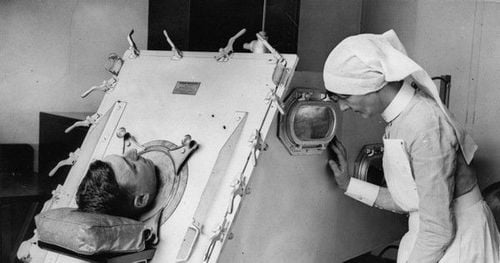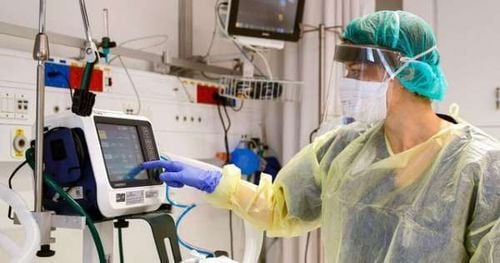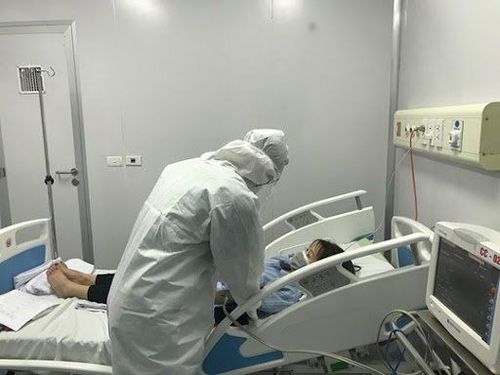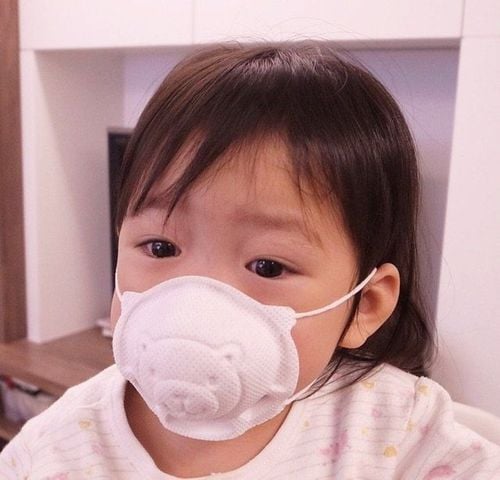This is an automatically translated article.
This article is professionally consulted by Master, Doctor Nguyen Le Duc Hoang - Emergency Medicine Doctor - Emergency Department - Vinmec Danang International Hospital.As millions of people across the United States and the world are struggling to fight COVID -19, many patients have symptoms of shortness of breath, ventilators become a top priority for healthcare workers to help patients. survive. Currently, the shortage of ventilators is becoming more and more serious.
1. History of ventilators
For doctors, using a ventilator is an extreme measure because only when the patient's lungs cannot supply enough oxygen on their own, this method applies. Ventilators can also help people feel more comfortable when they have trouble breathing and allow doctors to more easily remove secretions from the lungs or deliver drugs directly into the respiratory system.
Such treatments are not common. However, ventilators have a long history. Modern ventilators as they are today still operate on the same basic principles on which they have been operated for more than a century.
From the end of the 18th century, people began to use mechanical means to ventilate patients. The Royal Humane Society of England at that time had begun to advocate the use of bellows like the ones used by blacksmiths to deliver air directly into the lungs of the sick. While such techniques could not be controlled efficiently and accurately, they were still considered the best means of respiratory support at the time. This technique is called positive pressure ventilation.
In 1830, a Scottish doctor invented a sealed box containing air. This system changes the air pressure of the environment outside the body instead of pushing air directly into the respiratory system, and indirectly affects the air circulating in the lungs.
The first versions of ventilators were based on this principle of pressure, such as the 19th century neonatal resuscitation box invented by an Austrian doctor or the famous inventor's vacuum jacket Alexander Graham Bell.

However, even when the iron lung became the symbol of medical success at the time, positive pressure ventilation was the most widely used method of respiratory support. Because the main problem with iron lungs is that they only solve part of the problem. Many patients with polio will still die. People will inhale saliva or gastric juices into their lungs when their body becomes too weak to swallow them down. This is the most common complication when using a negative pressure machine.
In 1907, German inventor Johann Heinrich Dräger introduced a device for positive pressure ventilation called the Pulmotor. Through a mask, the device can deliver oxygen into the patient's lungs. The machine will stop and the lungs will push themselves out when the required pressure is reached.
Forrest Bird - a former US Army pilot, developed the Bird Mark 7 respirator in the mid-1950s. Over the decades that followed, it became a widely used technique in the aviation industry. , ambulance services and mobile medical facilities. By the mid-1960s, the technique had made major breakthroughs.
Some say that the Mark 7 is the first modern medical mask. Over the decades, with the advent of computers and advances in science and technology, it has greatly influenced the invention of modern ventilators today. In addition to the advancements in medical knowledge of the medical team, the patient's ability to survive has increased based on a change in perception and the amount of air that should be brought into the lungs with each breath of the person. sick. A study conducted in 2000 showed that lowering the ventilatory volume improved survival rates in patients. Of course, now that this approach has become the standard of care for patients with respiratory failure, in particular, it is the ideal method of care for patients with ARDS (Acute Respiratory Distress Syndrome). count) caused by the Corona virus.
2. The importance of ventilators

Today, along with the advancement of science and technology, high-function ventilators have been born with a compact design and controlled by a computer. These include an air tube that is placed through the patient's mouth down into the windpipe. Through the air duct, the compressor pushes air into the lungs. In some cases, the doctor will have to make a hole in the windpipe and insert a catheter. This technique is called tracheostomy.
When the patient enters the polio stage, the virus attacks both lungs, causing them to seriously damage, the ventilator is the essential medical equipment to save the patient's life.
Currently, there is a serious shortage of ventilators in many countries. They become more precious than ever, especially in the context of the rapidly spreading COVID-19 worldwide with extremely serious impact. In the history of ventilator invention, perhaps no one has ever thought that there was a time when ventilators were so severely lacking as now. Countries are increasing production of ventilators to cope with the current complicated disease situation.
Patients with COVID-19 will be at high risk of severe progression, to the stage of shortness of breath, even respiratory failure. Therefore, the patient may have to use a ventilator to maintain breathing and maintain life.
If you have a need for consultation and examination at the Hospitals of the national health system, please book an appointment on the website for service.
Please dial HOTLINE for more information or register for an appointment HERE. Download MyVinmec app to make appointments faster and to manage your bookings easily.














